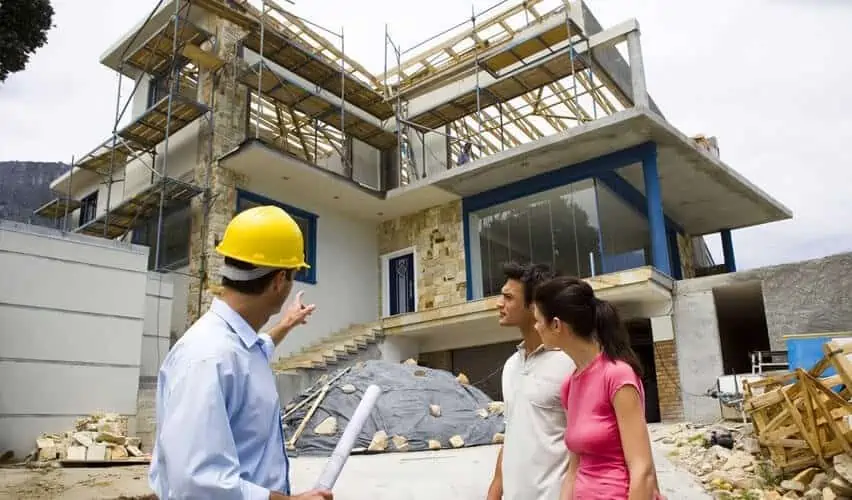Building a house is a complex, multi-faceted process that involves a range of professionals, materials, and techniques. From initial design to final touches, house construction is a journey that transforms raw land into a livable, functional, and aesthetically pleasing home. This guide provides a detailed look at the key stages of house construction, highlighting the various steps and considerations involved in turning a blueprint into a finished house.
1. Planning and Design
a. Conceptualization
The first step in house construction is the conceptualization phase, where the vision for the home is developed. This phase involves discussions between the future homeowner and architects or designers to determine the style, size, and functionality of the house. Key considerations include:
- Lifestyle Needs: The design must accommodate the lifestyle and needs of the occupants, such as the number of bedrooms, bathrooms, and special features like home offices or recreational areas.
- Budget: Establishing a budget is crucial as it influences every aspect of the project, from design to materials and construction methods.
- Site Selection: Choosing a suitable site involves evaluating factors such as location, topography, zoning regulations, and proximity to amenities.
b. Architectural Design
Once the concept is clear, architects create detailed architectural plans and blueprints. These plans include:
- Floor Plans: Detailed layouts of each floor, showing the arrangement of rooms, doors, windows, and other elements.
- Elevations: Drawings that show the exterior views of the house, including facades and rooflines.
- Sections: Cross-sectional views that illustrate the vertical relationships between different parts of the house.
Architects work closely with structural engineers, who ensure that the design meets safety and building codes. They also collaborate with interior designers to plan the interior layout, finishes, and fixtures.
2. Permitting and Approvals
Before construction begins, the plans must be submitted to local authorities for approval. This process typically involves:
- Building Permits: Required for most construction projects to ensure compliance with local building codes and regulations.
- Zoning Approvals: Ensures that the proposed construction aligns with local zoning laws, which govern land use and building placement.
- Environmental Reviews: Some locations may require assessments to evaluate the environmental impact of the construction.
The permitting process can vary depending on the jurisdiction and the scope of the project. It’s important to obtain all necessary approvals before commencing construction to avoid legal issues and delays.
3. Site Preparation
a. Clearing and Excavation
Site preparation involves several key steps to prepare the land for construction:
- Clearing: Removing any existing structures, vegetation, or debris from the site.
- Excavation: Digging and grading the land to create a level foundation. This includes digging trenches for the foundation and any required utility lines.
b. Foundation Work
The foundation is a critical component of the house, providing structural support and stability. There are several types of foundations, including:
- Slab-on-Grade: A concrete slab poured directly on the ground, commonly used in warmer climates.
- Crawl Space: A raised foundation with a space between the ground and the house, allowing access to utilities and ventilation.
- Basement: An excavated area below the house that can be used for storage or additional living space.
Foundation work involves pouring concrete footings, creating foundation walls or piers, and ensuring proper drainage to prevent water damage.
4. Framing
a. Structural Framework
Framing is the process of constructing the skeletal structure of the house. This involves:
- Wood Framing: Traditional framing using wooden studs, beams, and joists. It is commonly used for residential construction due to its cost-effectiveness and versatility.
- Steel Framing: Used in some modern constructions for its strength and durability. It is often chosen for commercial or larger residential projects.
During framing, builders construct the walls, floors, and roof structure. This phase also includes installing the roof trusses or rafters, which support the roof deck and roofing materials.
b. Sheathing
Sheathing is applied to the exterior framing to provide a base for insulation and siding. It includes:
- Wall Sheathing: Typically plywood or oriented strand board (OSB) applied to the exterior walls.
- Roof Sheathing: Provides a base for roofing materials, usually made of plywood or OSB.
Sheathing helps to reinforce the structural integrity of the house and provides a surface for weatherproofing.
5. Mechanical Systems
a. Plumbing
Plumbing installation involves laying out the water supply and drainage systems:
- Water Supply: Installing pipes for clean water to enter the house, including connections to fixtures like sinks, toilets, and showers.
- Drainage: Installing pipes and vents for waste water to exit the house, ensuring proper drainage and preventing clogs.
Plumbers also install water heaters, which provide hot water for domestic use.
b. Electrical
Electrical work includes:
- Wiring: Installing electrical cables throughout the house to provide power to outlets, switches, and fixtures.
- Panel Installation: Setting up the main electrical panel, which distributes electricity from the utility company to various circuits in the house.
- Lighting and Outlets: Installing light fixtures, electrical outlets, and other components.
Electricians must adhere to strict safety codes and standards to ensure a safe and functional electrical system.
c. HVAC (Heating, Ventilation, and Air Conditioning)
HVAC systems are essential for maintaining indoor comfort:
- Heating: Installing systems like furnaces or heat pumps to provide warmth during cold weather.
- Ventilation: Ensuring proper air circulation and ventilation to maintain indoor air quality.
- Cooling: Installing air conditioning systems to provide relief during hot weather.
HVAC systems are typically installed after the major framing and rough-ins are completed but before interior finishes are applied.
6. Insulation and Drywall
a. Insulation
Insulation is installed to improve energy efficiency and comfort. It includes:
- Wall Insulation: Materials like fiberglass batts, spray foam, or cellulose are used to insulate the walls and prevent heat transfer.
- Attic Insulation: Helps to keep the home cool in summer and warm in winter by insulating the roof space.
Proper insulation reduces energy consumption and enhances the overall comfort of the home.
b. Drywall Installation
Drywall, or gypsum board, is installed on the interior walls and ceilings. It involves:
- Hanging Drywall: Attaching sheets of drywall to the framing with screws or nails.
- Taping and Mudding: Applying joint tape and compound to cover seams and create a smooth surface.
- Sanding and Finishing: Sanding the drywall to achieve a smooth finish, preparing it for painting or other finishes.
Drywall installation provides the finished surface for painting and other interior finishes.
7. Interior Finishes
a. Painting and Wall Coverings
Painting is one of the final steps in the interior finishing process:
- Priming: Applying a primer coat to seal the drywall and create a uniform surface for painting.
- Painting: Applying the final coat of paint in the desired colors and finishes.
- Wall Coverings: Installing wallpaper or other decorative wall treatments if desired.
b. Flooring
Flooring installation includes:
- Subflooring: Installing a base layer that provides a stable surface for the finished flooring.
- Finished Flooring: Laying materials such as hardwood, tile, carpet, or vinyl, depending on the design and preferences.
c. Cabinetry and Fixtures
Installing cabinetry, countertops, and fixtures involves:
- Kitchen and Bathroom Cabinets: Installing cabinets and storage solutions in the kitchen, bathrooms, and other areas.
- Countertops: Installing countertops made from materials like granite, quartz, or laminate.
- Fixtures: Installing sinks, faucets, and other hardware.
8. Exterior Finishes
a. Siding and Trim
Exterior finishes include:
- Siding: Installing materials like vinyl, wood, or fiber cement on the exterior walls to protect the house and enhance its appearance.
- Trim: Adding decorative elements around windows, doors, and corners to complete the exterior look.
b. Roofing
Roofing installation involves:
- Roof Decking: Installing the sheathing that provides a base for the roofing materials.
- Underlayment: Applying a protective layer beneath the shingles or other roofing materials.
- Shingles or Roofing Material: Installing the final roofing material to protect the house from the elements.
9. Final Touches and Landscaping
a. Final Inspections
Before moving in, the house undergoes final inspections to ensure that all systems are functioning correctly and that the construction meets local codes and standards. Inspectors check for:
- Safety Compliance: Ensuring that electrical, plumbing, and HVAC systems are installed correctly and safely.
- Quality Assurance: Verifying that the construction meets the quality standards specified in the plans and contract.
b. Landscaping
Landscaping involves:
- Grading: Final grading of the yard to ensure proper drainage and prevent water from pooling near the foundation.
- Planting: Installing grass, shrubs, trees, and other vegetation to enhance the appearance of the property.
- Hardscaping: Adding features like walkways, patios, and retaining walls.
10. Moving In
Once the construction is complete and all inspections are passed, the house is ready for occupancy. Moving in involves:
- Final Cleaning: A thorough cleaning of the interior and exterior to prepare the house for its new occupants.
- Moving Furniture: Transporting and arranging furniture and personal belongings in the new home.
- Setting Up Utilities: Ensuring that all utility services, such as electricity, water, and gas, are connected and functioning properly.

